Karuvepilai kulambu | Curry leaves gravy | Karuvepilai thokku
Karuvepilai /curry leaves are very common herbs used widely in south India. Preparation includes grinding curry leaves and cooking in tamarind based gravy, topped with some jaggery.
Curry leaves have lots of medicinal values. Some of them are:
- Firstly, these leaves have various anti-oxidant properties, ability to control diabetes, bad cholesterol and dysentery.
- Also, they have cancer-fighting properties as well ass proven cosmetic value of nourishing hair growth.
- Moreover, curry leaves have lots of fibrous content and help in easy digestion.
In India, we use curry leaves in many recipes in India as a flavoring agent. They have a strong aromatic flavor and when cooked they get a slightly pungent taste. Hence like other whole spices these leaves are also left out while eating. The only way to empty them is to make as chutney or gravy/kuzhambu 😉
Including this fibrous karuvepilai kuzhambu once in a week is very healthy and you can store this kuzhambu for a week in the fridge. Actually, this gravy tastes great on the second day 😉
Please see the stepwise pictures and explanations given below.
Similar tasty & healthy kulambu varieties:
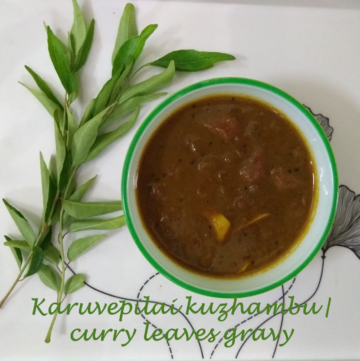
Karuvepilai kuzhambu | curry leaves gravy | karuvepilai thokku
Ingredients
- Curry leaves/Karuvepilai – 1 cup heaped
- Shallots/small onions-8
- Garlic-5pods
- Tamarind-1 small lemon size
- Tomato – 1 (optional)
- Mustard seeds – 1tsp
- Jeera -1tsp
- Methi/fenugreek seeds-1tsp
- Turmeric powder – ½ tsp
- Sambhar powder – 1tsp
- Salt-as required
- Gingelly oil – 1 tbsp
- Jaggery – 1 small piece (optional)
Instructions
Preparation | How to make karuvepilai kulambu:
- Soak tamarind in some water.
- Peel and chop onions. You can use one big onion if you don’t have shallots.
- Peel and crush garlic. Crushing gives extra flavor.
- Wash curry leaves and grind them into fine paste.
Recipe:
- In a kadai heat gingelly oil. Add mustard seeds and cumin seeds. Let them splutter.
- Add fenugreek/methi seeds and fry to golden brown state. For any tamarind based gravy, adding methi seeds is an important step. Fenugreek has the property of balancing the acidity created by tamarind.
- Add chopped onions and garlic. Fry onions until transparent color achieved.
- Add turmeric powder.
- Add chopped tomato. This is optional. As this karuvepilai kulambu is tamarind based gravy, this step can be skipped. I added tomato for some extra taste.
- Once tomatoes turn mushy add karuvepilai paste and saute nicely. The raw flavor of curry leaves/karuvepilai should not be there.
- Add sambhar powder. If sambhar powder is not available, ¾ tsp of red chilli powder can be added.
- Add tamarind juice extract to the gravy. Filter out and discard the waste. Close the lid and let the kulambu boil for ten minutes until raw tamarind flavor goes off.
- Add required stone salt. Adjust the consistency of the kulambu by adding some water. You can see the oil floating on top of gravy.
- Add small jaggery piece and mix (I forgot to take picture). Switch off the stove at this stage.
- Serve with hot steamed rice and potato fry or simple papad.
Notes
- Curry leaves paste and tamarind should balance each other. So mind the quantity used.
- This gravy can be stored in fridge and used for a week.
- Try to use fresh curry leaves/karuvepilai. Adding jaggery is optional. This gives a nice taste to balance the sourness of tamarind.
Nutrition
Preparation:
- Soak tamarind in some warm water & extract thick pulp/juice and keep aside.
- Peel and chop small onions and you can use one big onion if you don’t have shallots.
- Peel and crush the garlic. Crushing gives extra flavor.
- Wash curry leaves and then grind them into a fine paste.
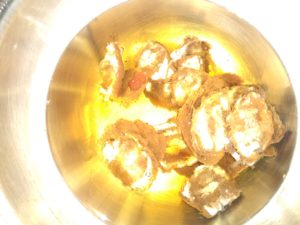
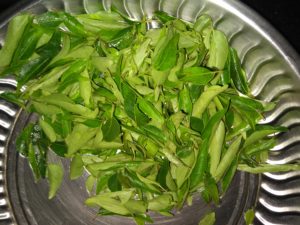
Recipe:
- In a kadai heat gingelly oil. Add mustard seeds and cumin seeds and let them splutter.
- Add fenugreek/methi seeds and fry to golden brown state. For any tamarind based gravy, adding methi seeds is an important step. Fenugreek has the property of balancing the acidity from tamarind.
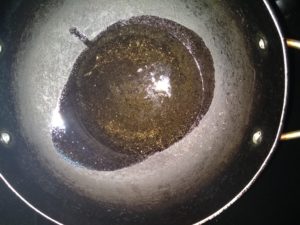
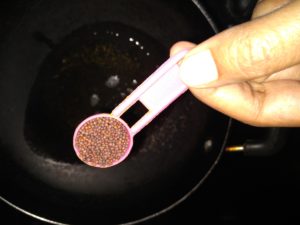
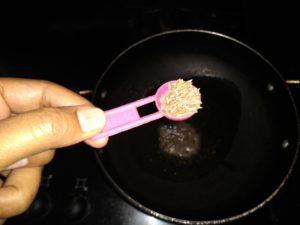
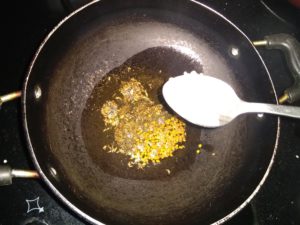
- Add onions and garlic, saute until they become soft and transparent.
- Also, add turmeric powder.
- Add chopped tomato. This step is optional. As this karuvepilai kulambu is tamarind based gravy, this step can be skipped. I add tomato for some extra taste and body.
- Once tomatoes turn mushy add karuvepilai paste and saute nicely. Cook until the raw flavor of curry leaves/karuvepilai disappear completely.
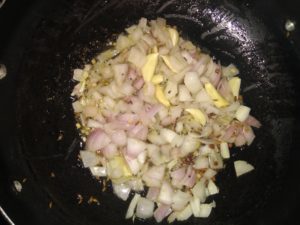
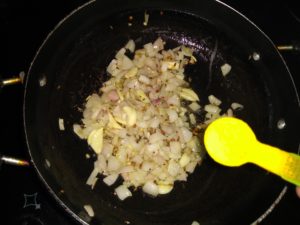
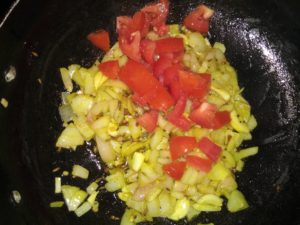
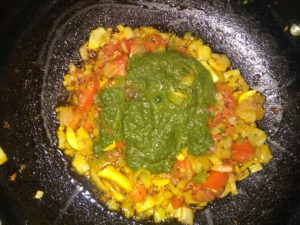
- Add sambhar powder. If sambhar powder is not available, use ¾ tsp of red chilli powder.
- Now add tamarind juice extract to the gravy. Filter out and discard the waste. Close the lid and let the kulambu boil for ten minutes until raw tamarind flavor goes off.
- With required salt adjust the consistency of the kulambu by adding some water.
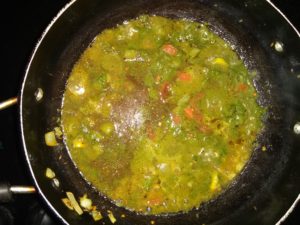
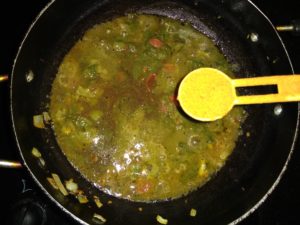
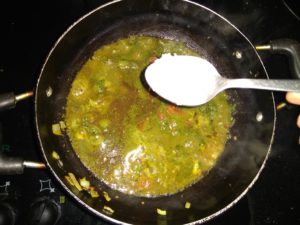
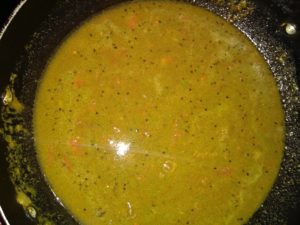
- You can see the oil floating on top of the gravy.
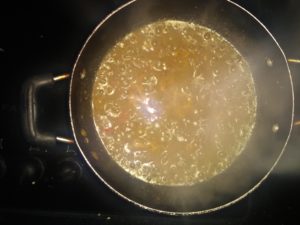
- Add small jaggery piece and mix (I forgot to take the picture). Switch off the stove at this stage.
- Serve with hot steamed rice and potato fry or simple papad.

Tips:
- First of all, this curry leaves gravy tastes great with steamed rice along with any fried side like simple papad, potato fry, Seppankizhangu roast, Vazhakkai varuval, Onion pakoda, etc.
- Further, jaggery addition is optional and you can avoid if you prefer.
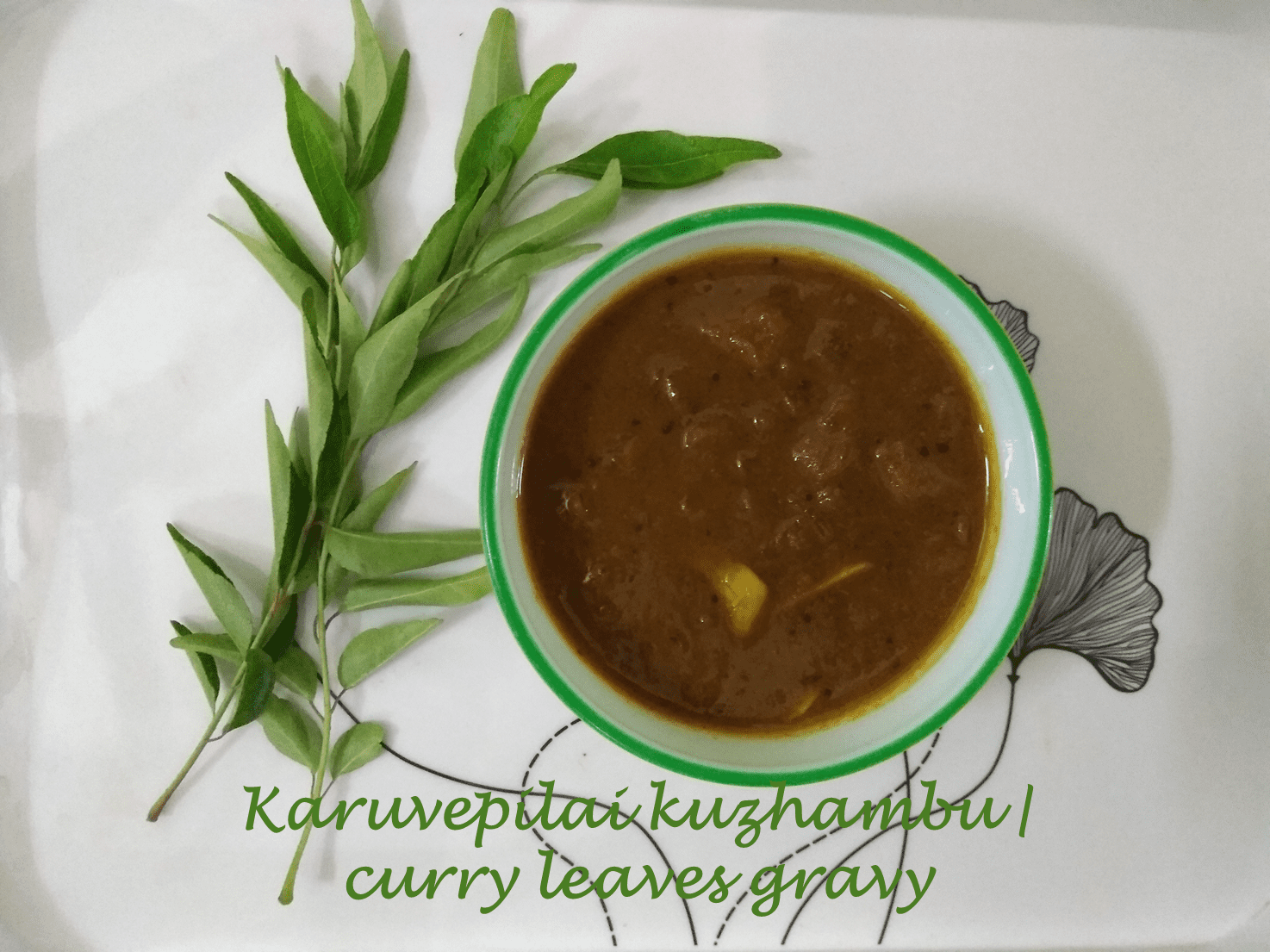
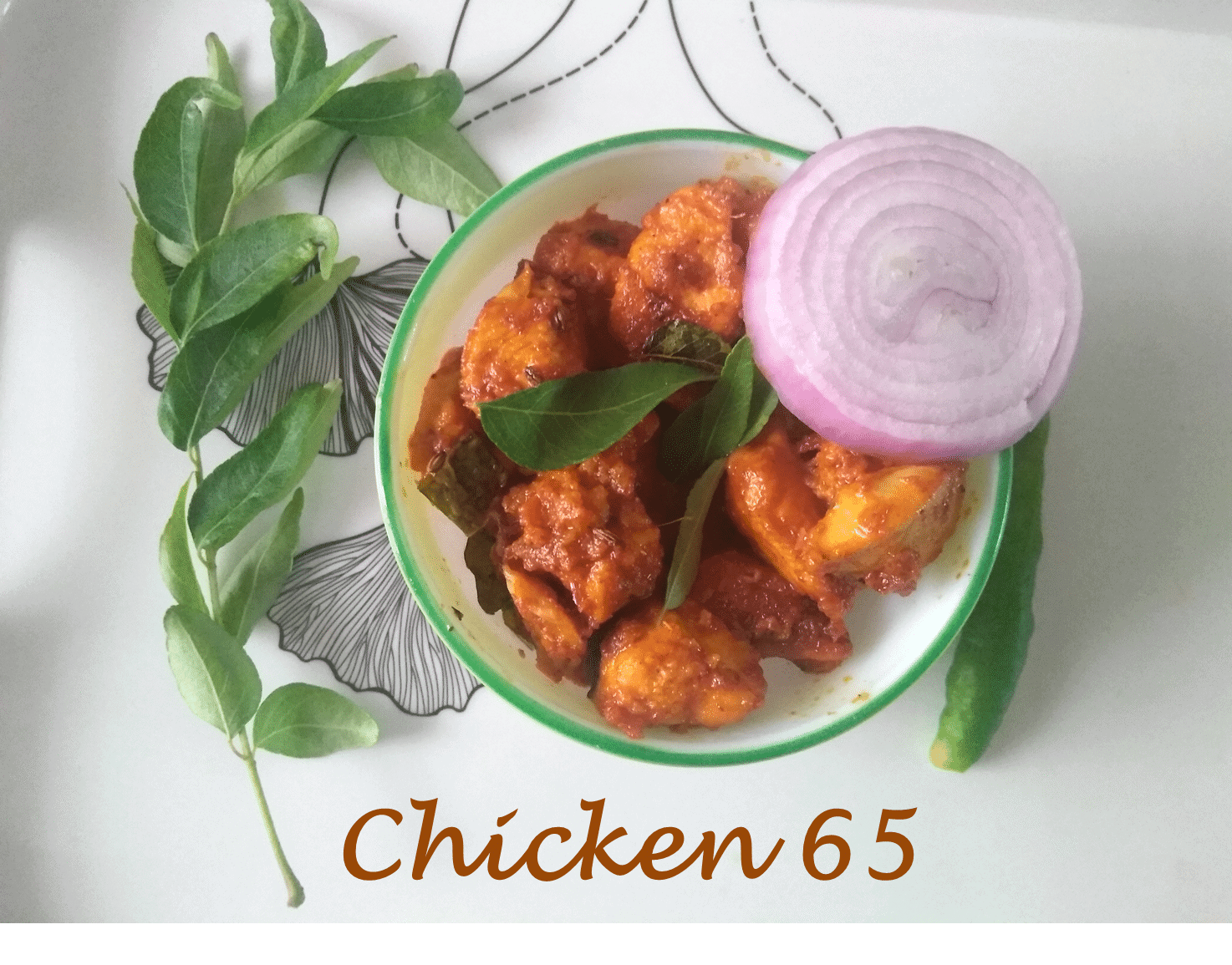
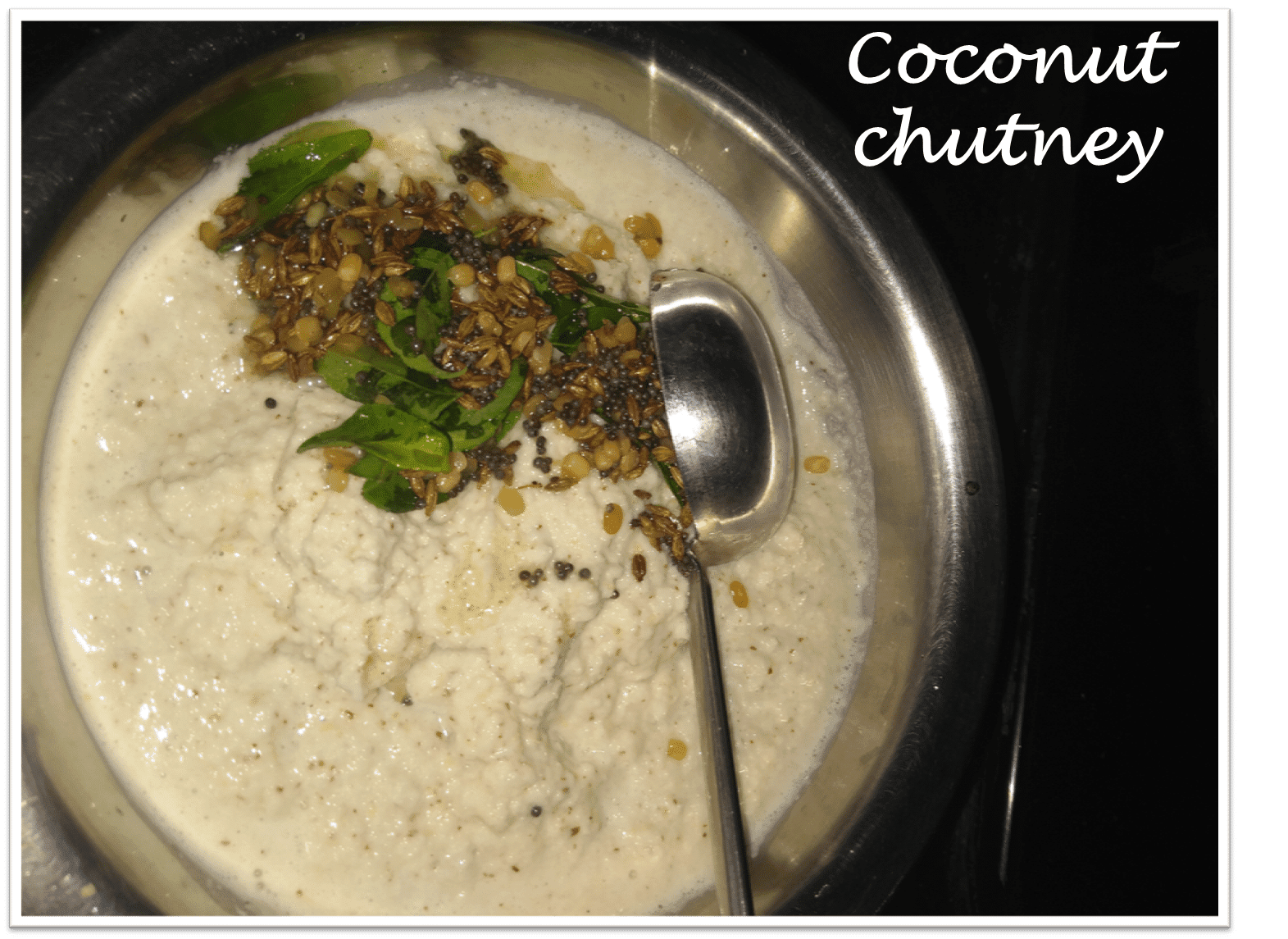

Pingback: Keerai masiyal recipe | Keerai kadayal | Green leaves curry | Sangskitchen
Pingback: Suraikkai thattaipayaru kuzhambu | Bottle gourd cowpeas gravy |
Pingback: Potato podimas | Urulaikilangu podimas recipe | Sangskitchen
Pingback: Sprouts | How to grow mixed sprouts at home | Sangskitchen